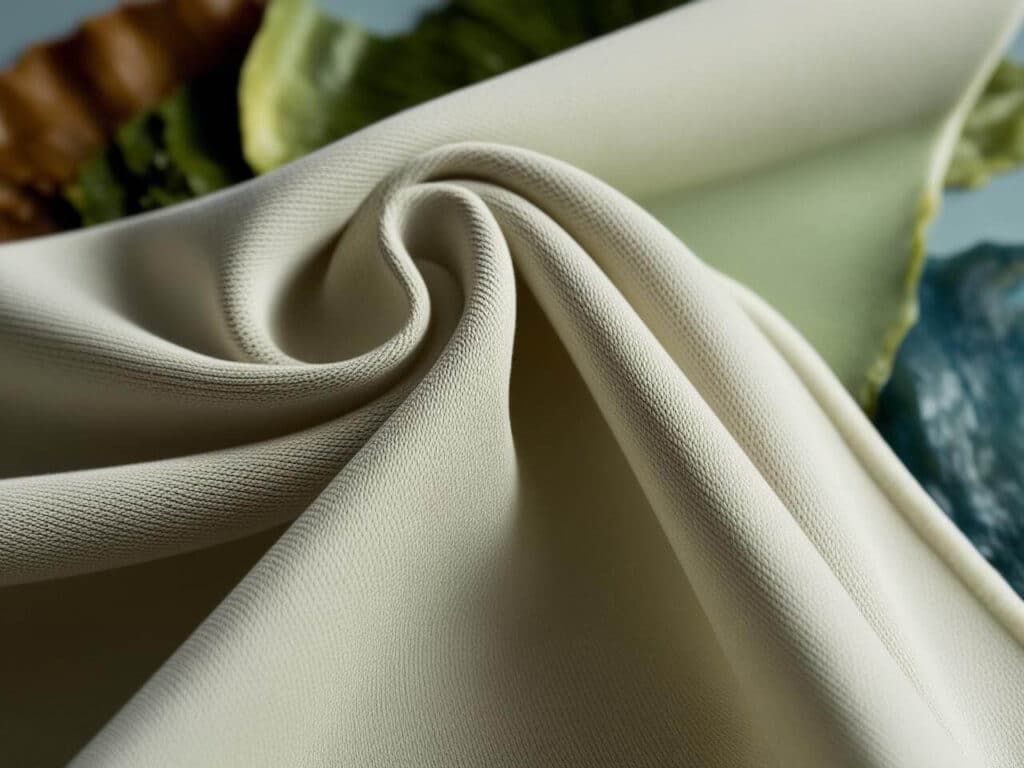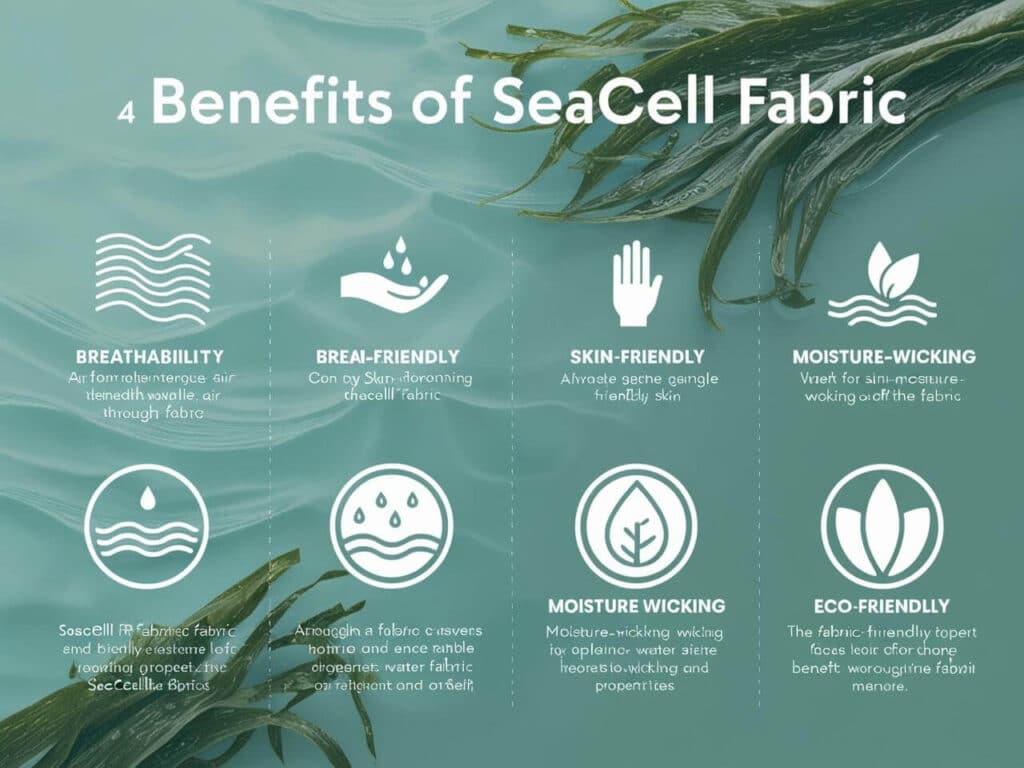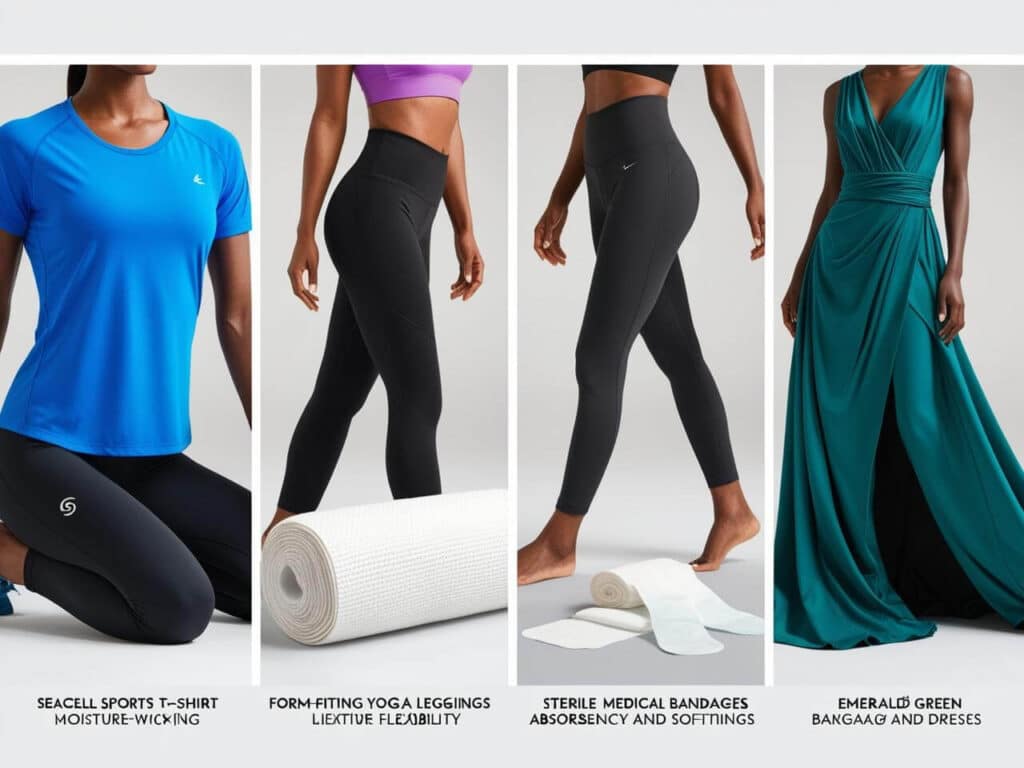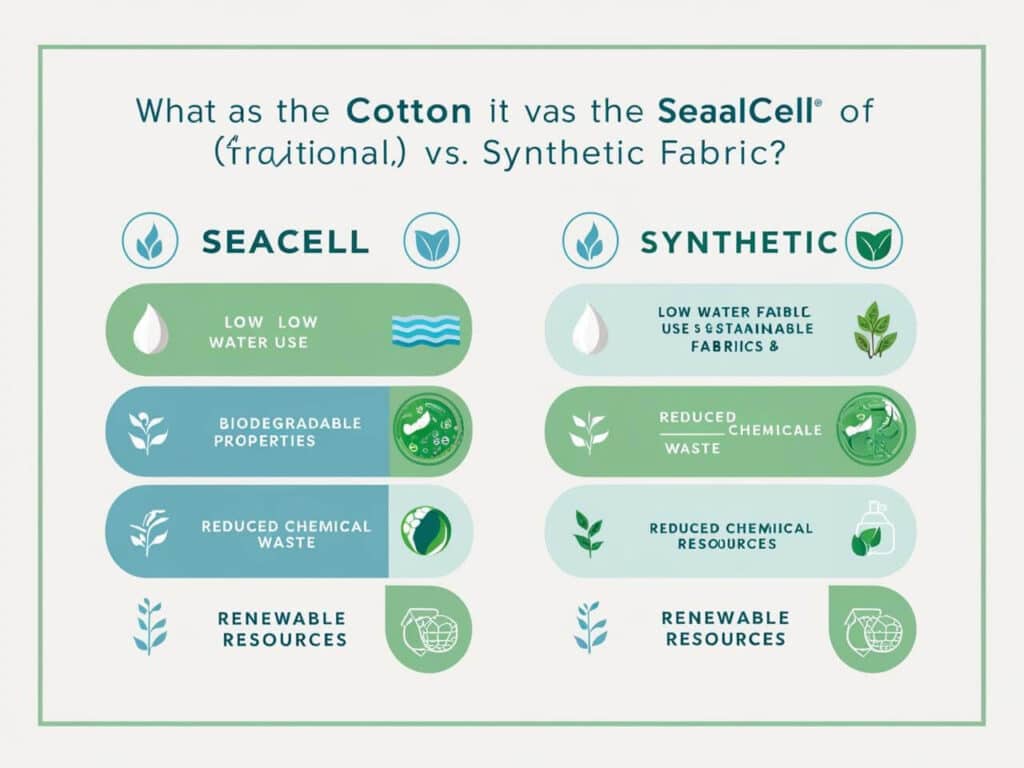Introduction
SeaCell fabric is one of the most exciting innovations in sustainable textiles. As someone deeply invested in eco-friendly materials, I’ve always been fascinated by how natural resources like seaweed can be transformed into soft, breathable, and durable fabric. If you’re curious about sustainable fashion, performance textiles, or skin-friendly fabrics, SeaCell is a name you should know.
But what exactly is SeaCell fabric, and why is it becoming a favorite among eco-conscious consumers? In this guide, I’ll break down:
✔ What SeaCell fabric is and how it’s made
✔ Its unique benefits for both wearers and the environment
✔ How it compares to other sustainable textiles
✔ Real-world applications in fashion, activewear, and medical textiles
If you’re looking for a breathable, hypoallergenic, and environmentally friendly fabric, you’ll want to read on.
What is SeaCell Fabric?

SeaCell fabric is an innovative sustainable textile made from a blend of seaweed fibers and natural cellulose. This unique combination results in a fabric that is not only eco-friendly but also offers breathability, moisture absorption, and skin-soothing properties.
🌱 How is SeaCell Fabric Made?
The process of creating SeaCell fabric involves several key steps:
- Harvesting Seaweed – Sustainably sourced seaweed is carefully collected without harming marine ecosystems.
- Drying & Grinding – The seaweed is dried and ground into a fine powder.
- Blending with Cellulose – The seaweed powder is mixed with natural cellulose fibers, usually from beechwood.
- Lyocell Process – Using a closed-loop production system, the fibers are spun into a textile while minimizing waste and chemical use.
🎯 Key Features of SeaCell Fabric:
✔ Lightweight & Breathable – Perfect for hot climates and activewear.
✔ Hypoallergenic & Skin-Friendly – Contains natural minerals beneficial to the skin.
✔ Moisture-Wicking – Keeps the wearer cool and dry.
Benefits of SeaCell Fabric

SeaCell fabric isn’t just another eco-friendly textile—it offers unique advantages for both wearers and the environment. Let’s explore why this fabric is gaining popularity.
💆♀️ 1. Skin-Friendly & Hypoallergenic
✔ Rich in Antioxidants – SeaCell fabric retains beneficial seaweed properties, providing the skin with vitamins, minerals, and amino acids.
✔ Hypoallergenic – Ideal for sensitive skin, as it does not contain harsh chemicals.
✔ Soothing Effect – The natural compounds help reduce irritation and inflammation, making it a great choice for medical textiles and compression wear.
🌿 2. Sustainable & Eco-Friendly
✔ Biodegradable & Non-Toxic – SeaCell fabric naturally decomposes without releasing harmful chemicals into the environment.
✔ Low Water & Energy Consumption – Compared to cotton and synthetic fibers, SeaCell requires significantly less water and energy to produce.
✔ Closed-Loop Production – The fabric is made using the Lyocell process, which recycles water and chemicals, reducing waste.
🔗 External Resource:
🏃♂️ 3. Performance-Driven Qualities
✔ Breathable & Moisture-Wicking – Keeps you cool and dry, making it ideal for sportswear, yoga wear, and athleisure.
✔ Lightweight & Durable – Feels soft yet resilient, ensuring longevity without compromising comfort.
✔ Odor-Resistant – Naturally reduces bacterial growth, keeping clothes fresher for longer.
How is SeaCell Fabric Used?

SeaCell fabric is making waves in multiple industries, from fashion to medical textiles. Its breathability, sustainability, and skin-friendly properties make it a go-to material for eco-conscious brands.
👗 1. Fashion & Apparel
SeaCell fabric is becoming a favorite among sustainable fashion brands. It is used in:
✔ T-Shirts & Casual Wear – Soft, breathable, and perfect for daily wear.
✔ Yoga & Activewear – Moisture-wicking and lightweight, keeping you cool during workouts.
✔ Luxury & Eco-Fashion – Blended with organic cotton or silk for high-end sustainable fashion.
🔗 External Resource:
🎥 YouTube Video Suggestion:
[How Sustainable Fabrics Are Made – SeaCell Fabric Process]
🏥 2. Medical & Wellness Textiles
✔ Compression Wear – Provides a soothing effect on the skin, making it ideal for medical-grade clothing.
✔ Therapeutic Clothing – Used in eczema-friendly garments, thanks to its antioxidant-rich fibers.
✔ Bandages & Wound Care – Some studies suggest that SeaCell’s skin-rejuvenating minerals help in faster healing.
🏡 3. Home Textiles & Sustainable Living
✔ Eco-Friendly Bedding – Soft and breathable, perfect for organic sheets and pillowcases.
✔ Towels & Bathrobes – Highly absorbent and gentle on sensitive skin.
✔ Upholstery & Interior Design – Used in sustainable furniture and décor.
🔗 External Resource:
Is SeaCell Fabric Truly Sustainable?

SeaCell fabric is marketed as an eco-friendly and sustainable textile, but how does it actually measure up? Let’s break down its environmental impact.
🌱 1. Eco-Friendly Manufacturing Process
✔ Biodegradable – SeaCell fabric naturally decomposes, unlike synthetic materials.
✔ Low Water Consumption – Requires significantly less water compared to cotton production.
✔ Closed-Loop Processing – Uses a Lyocell-based method, which recycles solvents instead of releasing waste into the environment.
⚖ 2. Ethical Concerns & Challenges
🔸 Limited Large-Scale Production – SeaCell is still a niche material, making it harder to mass-produce.
🔸 Higher Cost – More expensive than traditional cotton and polyester.
🔸 Blended Fabrics – Often mixed with other fibers (e.g., cotton, spandex), which may affect its sustainability score.
🔗 External Resource:
SeaCell Fabric vs. Other Sustainable Fabrics
How does SeaCell compare to other eco-friendly textiles? Here’s a detailed breakdown of its strengths and weaknesses compared to organic cotton and bamboo fabric.
🆚 Comparison Table: SeaCell vs. Other Fabrics
| Feature | SeaCell Fabric | Organic Cotton | Bamboo Fabric |
| Sustainability | ✅ High – Biodegradable, low-impact production | ⚠️ Medium – Requires high water usage | ✅ High – Fast-growing and renewable |
| Breathability | ✅ Excellent – Moisture-wicking and cooling | ✅ Good – Natural airflow | ✅ Very Good – Absorbs moisture well |
| Skin Benefits | ✅ Yes – Antioxidants and skin-friendly | ⚠️ Limited – No special skincare benefits | ✅ Yes – Naturally antimicrobial |
| Moisture-Wicking | ✅ High – Absorbs sweat and dries quickly | ⚠️ Medium – Can retain moisture | ✅ High – Naturally moisture-absorbing |
| Durability | ✅ High – Strong, lightweight | ⚠️ Medium – Soft but wears out faster | ✅ Medium – Durable but can pill over time |
| Eco-Friendliness | ✅ Excellent – Low water & chemical use | ⚠️ Moderate – Requires pesticides in non-organic farming | ✅ Good – Bamboo grows fast but processing requires chemicals |
📌 Verdict: SeaCell fabric offers better breathability, moisture control, and skin benefits than both organic cotton and bamboo. However, its higher cost and limited availability remain challenges.
🔗 External Resource:
FAQs (People Also Ask)
Many people have questions about SeaCell fabric—here are the most common ones based on Google’s “People Also Ask” section and industry insights.
❓ What is SeaCell fabric used for?
✔ SeaCell fabric is used in fashion, sportswear, and medical textiles, thanks to its breathability, skin-friendly properties, and moisture-wicking ability.
❓ Is SeaCell environmentally friendly?
✔ Yes! SeaCell is biodegradable, requires low water and energy to produce, and follows a closed-loop Lyocell process, making it one of the most sustainable fabrics available.
🔗 External Resource:
❓ Where is SeaCell fabric made?
✔ SeaCell fabric is primarily produced in Germany by Smartfiber AG, a company specializing in sustainable textiles.
❓ Is SeaCell fabric stretchy?
✔ On its own, SeaCell is not highly stretchy, but when blended with spandex or elastane, it gains elasticity, making it ideal for yoga wear and activewear.
❓ Does SeaCell fabric feel soft?
✔ Yes! SeaCell has a smooth, luxurious texture, similar to Lyocell (Tencel) or modal fabric. It’s lightweight, soft, and gentle on the skin.
Is SeaCell Fabric the Future of Sustainable Textiles?
SeaCell fabric is a game-changer in sustainable fashion, offering a unique blend of breathability, skin-friendly properties, and eco-conscious production.
✔ Why It Stands Out:
- Hypoallergenic & Skin-Nourishing – Infused with antioxidants and minerals.
- Lightweight & Moisture-Wicking – Perfect for sportswear & casual wear.
- Eco-Friendly & Biodegradable – Uses a closed-loop production system with minimal environmental impact.
✔ Challenges to Consider:
- Higher cost compared to traditional fabrics.
- Limited large-scale production, making it less accessible.
Final Thoughts
If you’re looking for a sustainable alternative to synthetic fabrics or even organic cotton, SeaCell is an excellent choice. While still a niche material, its growth in eco-conscious fashion and wellness textiles signals a promising future.
🎯 Would you try clothing made from SeaCell fabric? Let me know in the comments!
